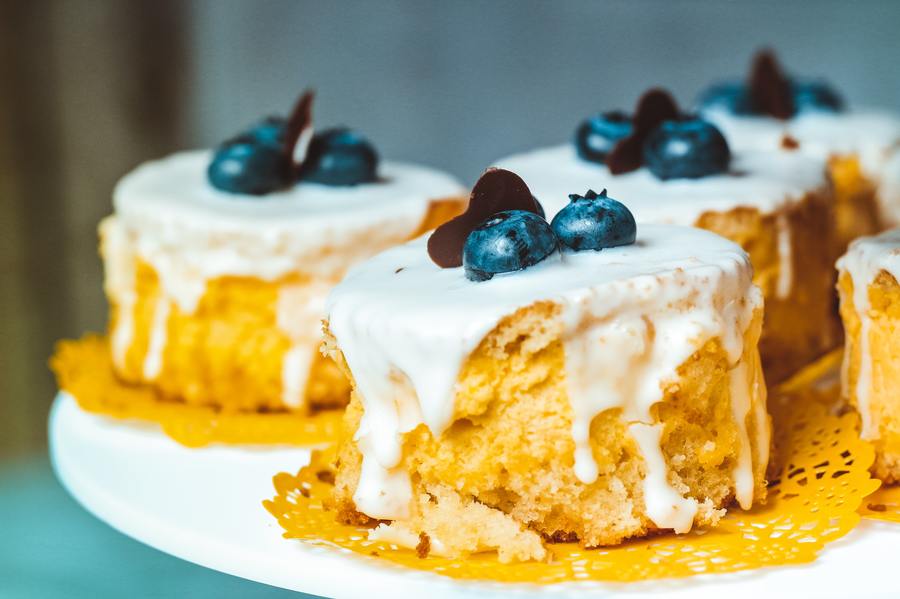Best Spices for Desserts
Understanding Spices
Your cart is empty.
SUBTOTAL
£0.00

Understanding Spices
If you think that spices only work for savoury dishes, think again. Spices are used in desserts all around the world. In Mexico, chocolate desserts often use chili which gives it a lovely depth. In Greece, cinnamon is added to baklava to create a warm, nutty filling. And in India, fennel seeds are added to malpua, a type of deep fried pancake.
Desserts can massively benefit from spices, as they can elevate flavours and add a rich aroma. Even just a small amount of spice can mean the difference between a good dessert and a great dessert. Here are some of the best spices to use in desserts, from common ones like cinnamon and vanilla bean, to more surprising spices like cardamom and anise seed.
Cinnamon is arguably the most used spice in desserts. There are actually two types of cinnamon. The more common variety that you’ll most likely get in supermarkets is cassia (Cinnamomum cassia) and is often labelled as ‘Korintje’ or ‘Saigon’. Then there’s true cinnamon, (Cinnamomum zelanicum), a higher quality spice which comes from Ceylon and India and has a mild and delicate taste. Whether you use whole or ground cinnamon depends on the recipe you’re making. Use whole sticks for infusing subtle flavour into sauces, syrups and custards. Use ground cinnamon for recipes that require a stronger taste, such as cinnamon rolls, truffles, apple pie, coffee cake, bundt cake, rice pudding and scones.
Nutmeg is a pretty common ingredient in desserts like apple pie, gingerbread, puddings and custards. But if you’re wanting to change things up a little, try using mace instead. Mace is the red, lacy coating that covers the nutmeg kernal. Although similar in taste to nutmeg, it’s a lot lighter, subtler and sweeter with notes of citrus. Mace pairs really well with berries and stone fruits like cherries, plums and peaches. Add a teaspoon of mace to crumbles, pies and carrot cake.

Another powerful spice are cloves. These are the aromatic flower buds of the clove tree. Often used alongside mace, cinnamon and nutmeg, the dried buds have a warming, sweet and slightly bitter taste. They have a sharper taste than cinnamon, but are a little less floral than cardamom. They can be used either ground or whole, and lend a delicious taste to pumpkin pies, spice cookies, poached pears, coffee cakes, icings, buttercreams and mousses. Ground cloves are also great in rich sticky biscuits and cakes that use treacle or molasses. They have a pungent flavour and aroma with a hint of bitterness, so a little goes a long way.
Cardamom is a spice made from the seed pods of different plants in the ginger family. The pods contain several seeds, but the whole pod can be used either whole or ground. The two main types of cardamom that you’ll come across are black cardamom and green cardamom. There is also white cardamom, which is a bleached type of green cardamom. When shopping for spices, you’ll most likely find green cardamom, also known as true cardamom. This is the best choice for desserts and sweet dishes, as it has a strong, sweet flavour with hints of lemon and mint. Black cardamom has more of a smoky taste, making it the better choice for savoury dishes. Cardamom pods have more flavour than the ground version, and work well in cakes, milk and rice puddings, cinnamon buns, cookies and pastries.
Despite their similar names, anise seed isn’t related to star anise. Also called aniseed, this flowering plant comes from the same family as carrots, celery and parsley. The seeds of this plant have a licorice flavour that is sweet, aromatic and mildly spicy. They’re used either ground or whole in a whole range of desserts like fruity pies, cookies, cakes, bread pudding or adding to the dough for baked goods. You can also add anise seed to drinks like hot chocolate, tea and coffee.

The rhizome, or rootstalk, of this flowering plant is a widely used spice in cooking and traditional medicine. In terms of desserts, ginger is mostly known for its use in gingerbread. But this warm, zingy, sweet and slightly spicy root lends a wonderful flavour to many other desserts. Ginger pairs well with sweet dessert fruits like apples, pears and berries, as well as lemon and chocolate. Use it in ginger biscuits, pies, cakes, cheesecakes, puddings, cookies and creme brulees. Ginger can come in many forms – ground, fresh, pickled, dried and preserved. When it comes to dessert, ground ginger is most commonly used.
Understanding Spices
Spices have long been integral to the UK's culinary landscape, adding depth, flavours, and richness to a myriad of dishes. From the pungent aroma of cumin in Indian curries to...
Read MoreUnderstanding Spices
Confetti is an essential part of any wedding day. Not only is it a wonderful way to greet a newlywed couple, but it also provides some beautiful photo opportunities. The...
Read MoreSeasonal Ideas
It’s no secret that any handmade gift will always be more special than a store-bought one. Homemade food gifts are especially wonderful, a labour of love that shows someone you...
Read MoreHealth and Wellbeing
It’s no secret that winter’s cold and gloomy weather makes us crave indulgent dishes like fondue and baked goods like sticky toffee pudding and apple crumble. While Christmas is the...
Read More